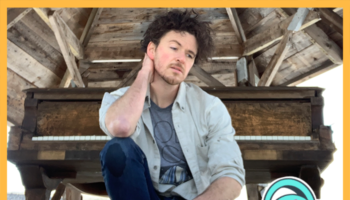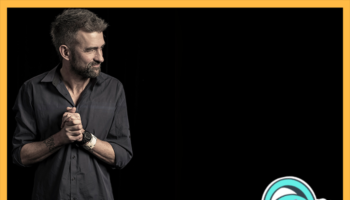Chilling Out
Mark Steger
Chilling Out is where TrunkSpace talks all things horror and genre with those who work on the projects that give us the thrills and chills to keep coming back for more. This time out we’re chatting with Mark Steger, an actor not instantly recognizable due to the fact that he’s usually buried deep beneath makeup and prosthetics. While Steger has performed and choreographed nightmare-inducing creatures in countless films, it is his turn as The Monster in the monster hit “Stranger Things” that continues to keep us up (and upside right) at night.
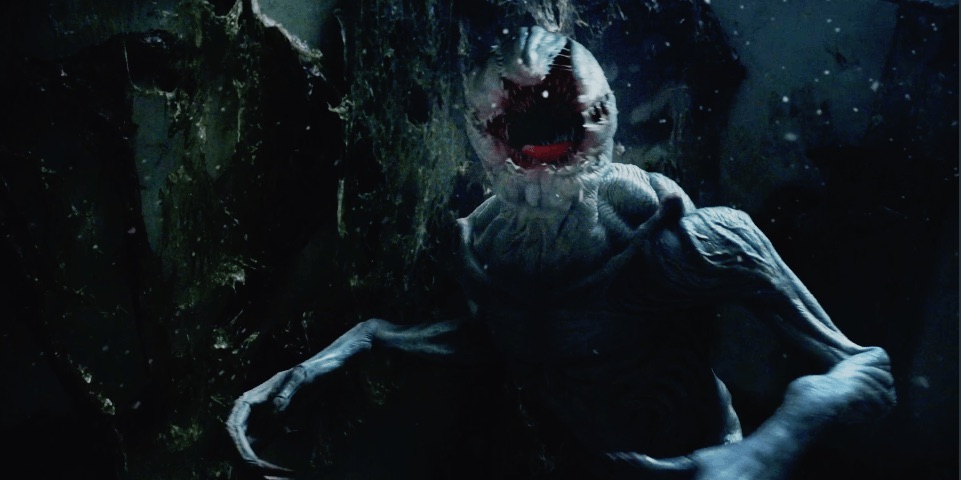
TrunkSpace: “Stranger Things” became the most talked about television series last year. Was there any indication during the production, at least for you, that it was going to be something special?
Steger: Well, it definitely had the feeling of a good one. I met the Duffers and I really liked them. They gave me a really good sense of themselves as directors. We have sensibilities that… certain commonalities and sensibilities. I met the other cast members and I read the script and I thought it was going to be one I could look back on and say, “I like that.” Nobody really thought it would become the pop cultural phenomenon that it became. I thought it would be popular, but not the kind of wildly popular that it became. (Laughter)
TrunkSpace: Do you think part of its success was because it so successfully plugged into that nostalgic feel of films like “The Goonies” and “The Monster Squad,” films that sort of defined a generation from the 80s who grew up on watching those movies in heavy rotation on HBO?
Steger: Yes. I’m sure that has a lot to do with its success. One of the things that I think makes it work is that it doesn’t feel like somebody just decided, “Hey, let’s do an 80s trip kind of thing and see if we can cash in.” It really feels like that there’s a lot of affection for that period of filmmaking. And what they wanted to do was make a film that would look like it would have come from that period. I really think that was the feeling that they were going for.
TrunkSpace: And you could feel that in the set dressing. None of the 80s brands and styles, at least those that Hollywood has focused on in the past, were front and center.
Steger: Yeah. And one of the things they did really well, people who were living in the 80s, they had stuff from the 60s and 70s in their house. Some of the stuff in Joyce’s house, that’s not furniture from the 80s. (Laughter) And I think actually some of that furniture had been lived in. (Laughter)
That attention to detail… that’s a big deal. Stylistically, it had that 80s vibe, but also it had a certain lived in naturalism that was going on that sold it. It felt like a lived in world.
TrunkSpace: We talk to actors about how they get into the mindset of a particular character or role, but, when you’re performing a creature that has never been seen or heard of before… how do you do that?
Steger: Well, obviously a lot of the inspiration comes from the look of the creature and its biometrics and whatever you get from the director, which was very concise from them. Their direction was, basically I’m like the shark from “Jaws.” And that helps you zero right in on it. But at the same time, I always ask myself certain questions. A lot of it is just stuff you ask yourself as an actor anyway. What does my character want? But, if it’s a being from another dimension it’s, what’s the atmosphere like where I come from? What’s the gravity like there? I’m obviously not psychologically human, so what is that state of mind? Being in the kind of suit… especially this particular suit that Spectral Motion built… it was really remarkable. Your biometrics are very different and what you’re getting from your senses is very different. You can’t necessarily see as well. You can’t smell as well. You can’t hear as well. All of this stuff helps contribute to feeling like something other. It’s not that difficult to get into a creature’s psychological state from that point. And then you’re working with these other wonderful actors who they… to a large degree they have to sell it. They have to sell your monsterness. It’s their reactions to what you’re doing so they get a lot of credit as well for creating the creature. It’s a lot of people. It’s the designers… Aaron Sims’ company. The practical effects artists, the visual effects artists and the actors. The production design. So much stuff goes into what’s available to me to draw from for inspiration.
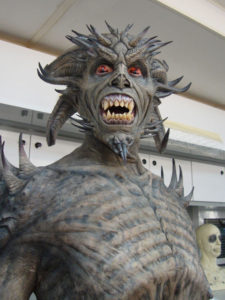
TrunkSpace: And so in your performance, you were always in scene with the other actors and able to react to them?
Steger: I was there on set with the actors, which is great. It’s great for the actors and it’s great for me. I had a lot of fun with Charlie (Heaton) and Natalia (Dyer) and Joe (Keery) shooting some of those scenes in the house. Yeah, the kids were a joy to work with. And the younger ones too. Scenes with Millie (Bobby Brown)… that stuff’s great. I feel like I have a great job. I really feel very fortunate to be doing what I’m doing.
TrunkSpace: For an audience, seeing a child’s reaction to a monster sort of ups the fear and realism because a child’s fear is so natural and not bogged down by life and adult ego.
Steger: Yeah. Definitely. Kid reactions are it’s own thing. The thing is too, in-between shots, I’d just be hanging out in my special monster chair that I had to sit in…
TrunkSpace: Wait. Special monster chair?
Steger: Yeah. Because of the suit. (Laughter) So I’d be sitting in my monster chair and the kids would walk by me and I’d just be like, “You’re going down, kid.” (Laughter) And then we’d start talking smack to each other. So, they would see who I was and they knew. So they were acting. Obviously when you see this thing in front of you that’s seven feet tall and has this crazy head and really long arms… it for sure helps, but they would see me with the head off and we’d be chatting. (Laughter)
TrunkSpace: The way the show handled the early introduction of the monster… seeing it feed… there was something very primal and animalistic to that.
Steger: Yeah. Definitely. It was pretty single-minded, for sure.
TrunkSpace: And that visual that the directors gave you… it’s the shark from “Jaws”… it paints an incredible picture of, here’s this creature that feeds, and then it goes away and does what a creature does when it’s not feeding.
Steger: Exactly. And like the character in “Jaws,” it exists in this other atmosphere and then it comes into your atmosphere, it jumps out… unless you get into its atmosphere… it crosses between this threshold and grabs something and goes back. That’s kind of perfect. (Laughter)
TrunkSpace: And what’s interesting about that is, a human character in a horror film is a bad guy, but here, a monster is just a monster. It’s not necessarily bad, at least in its own self-awareness, it’s just doing what a monster does.
Steger: Yeah. Exactly. It’s not one of those ones where there’s some kind of a gray area. It just is what it is. It’s doing what it does. It’s not making a decision that, “I like being bad.” (Laughter)
TrunkSpace: It’s not twirling it’s mustache.
Steger: (Laughter) That’s actually kind of funny. Twirling his little imaginary mustache. (Laughter)
TrunkSpace: The 80s in particular were a great time for monsters in the proper sense. Freddy, Jason, Pumpkinhead, etc. Today, zombies have sort of taken over the monster mainstay and changed the focus. Is it cool for you to be a part of something where a sort of proper monster gets attention again?
Steger: Yeah. That’s very cool. It’s a classic monster, which is pretty awesome. It’s just like… “Monster!” (Laughter) Say no more! (Laughter) Yeah, it’s classic in the mold of, you know, the original Alien and many other touchstones. My influences go back to the old Universal horror films… Lon Chaney, Boris Karloff… that stuff. I mean, I’m not that old, but I remember watching that stuff when I was a kid and just loving that stuff. It was so well done. And they were such great actors too. That’s one thing that’s not appreciated all the time… what actually goes into creating a monster. Aside from all of the design and makeup and all that… they were these amazing performers in that makeup.
TrunkSpace: And what was so cool about those old Universal movies was that they were tormented victims at the same time that they victimized people.
Steger: Yeah. They were not understood. They were innocent to some degree. Again, they were just being themselves. It’s like a dog. You can’t blame the dog for pooping on the carpet or whatever. It just needs to go. (Laughter)
It’s a great genre to be in and a great tradition when you think about that you’re a part of something that’s greater than yourself. There’s a lineage to that. And I really felt that with “Stranger Things.” It was very rewarding for sure.
TrunkSpace: Genres rise and fall in popularity, but horror always seems to maintain a steady level of interest. Why do people love to be scared?
Steger: I don’t know. You’re confronting primal fears and I think it can be very cathartic for people. I know it was for me when I was younger. And still is if I see a good one… if I see one that I like. I’m very picky. (Laughter) And I think that just never goes away. It’s like that, “What’s in the cave? What’s under the bed?” When you’re a kid… there are these fears that everybody has of the unknown and seeing that manifest with some imagination is always… it’s thrilling. It’s exciting. It’s fun. When you’re in a movie theater with a bunch of people and something really incredibly scary happens and it really works on screen, a lot of times people will start to laugh. It’s a relief and I think it’s valuable. I think there’s a lot of value in this genre. You know, it’s exploited a lot obviously, but what isn’t? There are people out there who are sincerely in love with it and some good directors out there and a good audience out there.
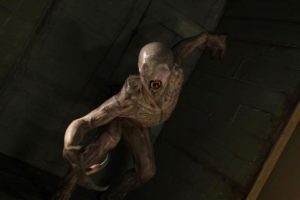
TrunkSpace: It’s also a genre that works so well as a shared experience, which is why it probably maintains such steady popularity in theaters.
Steger: Yeah. The communal experience with horror is what I think really sets it apart. I worked with a director named Nicholas McCarthy, who is actually one of my favorite directors to work with. We’ve done some low-budget horror films together, including “The Pact,” “At the Devil’s Door,” and recently a segment of “Holidays.” A lot of times when you’re doing low-budget things you have no idea what kind of distribution deal you’re going to get or if it’s going to end up in theaters, but he always makes a point of wanting it to be able to play in theaters and I think that makes a big difference. I really enjoy seeing it in a theater. There’s something about that communal experience that you can’t really replace.
TrunkSpace: So will we be seeing you in the second season of “Stranger Things?”
Steger: Yeah… that I can’t say anything about. (Laughter) I apologize, but I signed a book-length nondisclosure for that.
Steger is currently writing a dark horror film of his own with a writing partner and hopes to go into production on the film later this year.
And, could we see him in…?




